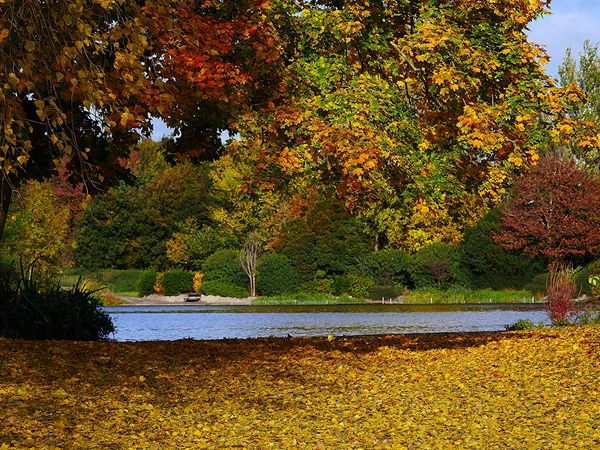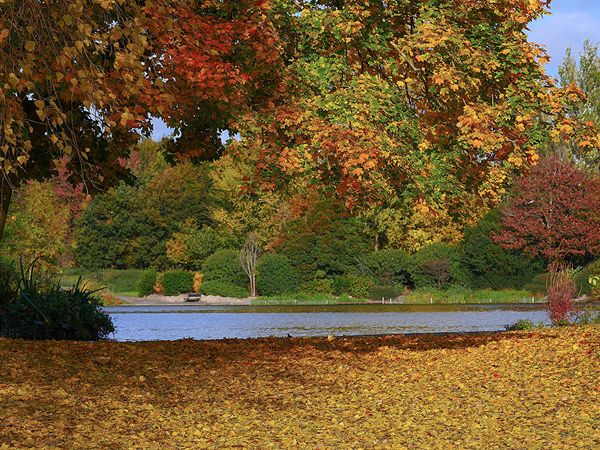Dynamic Range??
Oct 24, 2020 05:42:59 #
I feel less needful of extra dynamic range than some (many). Unless the detail in that part of an image cast in shadow is of real importance, is it wrong to include a natural looking shadow in a photograph? (even if inky black next to sunlit subjects).
When chatting dynamic range, it is not unusual for someone to say that the human eye has a greater dynamic range than does a camera’s sensor, but surely the truth is not so – a camera’s sensor together with it’s adjustable aperture can have just as great a dynamic range. The eye also has an aperture – which adjusts as the direction of our vision roams over dark and light areas, I have looked at brightly lit areas, conscious that in the corner of my vision are very dark areas. I have also been blinded by sunlight when exiting a darker house (equivalent to blown highlights)? Of course, this effect can be overcome with the help of the latest Ray-Bans.
Attached is a pic I shot a couple of days ago – there is a dark corner (bottom left) would you leave it or PP lighten it?
When chatting dynamic range, it is not unusual for someone to say that the human eye has a greater dynamic range than does a camera’s sensor, but surely the truth is not so – a camera’s sensor together with it’s adjustable aperture can have just as great a dynamic range. The eye also has an aperture – which adjusts as the direction of our vision roams over dark and light areas, I have looked at brightly lit areas, conscious that in the corner of my vision are very dark areas. I have also been blinded by sunlight when exiting a darker house (equivalent to blown highlights)? Of course, this effect can be overcome with the help of the latest Ray-Bans.
Attached is a pic I shot a couple of days ago – there is a dark corner (bottom left) would you leave it or PP lighten it?
Oct 24, 2020 05:59:29 #
Leitz
Loc: Solms
Delderby wrote:
I feel less needful of extra dynamic range than so... (show quote)
It doesn't appear to me that there is any important detail there, so I would leave it as it is. It does not detract.
Oct 24, 2020 06:18:17 #
John Sh
Loc: Toronto, Australia
It is well documented that the eye is drawn to very light or very dark areas. In this case the dark area is a bit of an eye snag, especially on download, so I would lighten it up just a bit. Otherwise a really pleasant autumn scene.
Oct 24, 2020 06:39:37 #
It's all a matter of the personal opinion of the photographer. Which way you prefer is all that matters.
Oct 24, 2020 08:59:31 #
John Sh wrote:
It is well documented that the eye is drawn to very light or very dark areas. In this case the dark area is a bit of an eye snag, especially on download, so I would lighten it up just a bit. Otherwise a really pleasant autumn scene.
I agree with this. It is an eye snag. You might want to do an adjustment with curves to brighten all of the shadow areas instead of just working on the bush on the left. It would look more uniform that way.
Oct 24, 2020 09:20:26 #
I love deep shadows and contrasty light - but they must fit the story or be the story. In the posted example, the location of the dark clump at the edge of the frame and its being the only dark clump in the composition are negative aspects IMO.
Oct 24, 2020 09:34:00 #
On my iMac screen, set to almost full bright, I see too much contrast and not enough light overall. Increasing exposure a bit might resolve the question.
Oct 24, 2020 10:02:50 #
Delderby wrote:
You have a misconception about dynamic range. It is the same for all apertures. I feel less needful of extra dynamic range than so... (show quote)
Think about it this way. Suppose you have a yard stick and it’s marked in 1/4 inch increments. The dynamic range of the yard stick is the max measurement divided by the minimum measurement. That is equal to 4x36=144.
That range does not change if you measure 6” or 2’ or 6’. You can measure more than 36” by moving the ruler (aperture) but you can’t measure less than 1/4”.
Now suppose you went to the store and bought a new one that had 1/8 inch markings. Now the dynamic range of that one is 8x36=288
Dynamic range of the sensor is independent of aperture. Another way to say it is sensor dynamic range is the same for all apertures.
The human eye is a wonderful complex instrument and it is far superior to any man made recording device.
The human eye has about 100 to 1000 times better dynamic range than a camera sensor. This is easy to see by taking a pic of a bright scene with light and shadow then comparing the result to what you see with your eye.
Oct 24, 2020 10:04:57 #
Regarding how much detail you need in the shadows in your composition that is up to you, it’s your choice to include more or less shadow detail depending on “artistic choice”
Oct 24, 2020 12:11:45 #
The dark shadows under the tree trunk are, as Linda notes, drawing the eye into this featureless area. The photo seems to be a little underexposed, but if you increase the overall exposure, you will lose the blue in the sky. This seems like a good example of where adding an hdr effect in post would give you the advantages of this process. Lightly applied, an hdr effect would lighten the foreground while maintaining or enhancing the sky.
If this were my image, that would be my first step. If that did not work, then I would increase the exposure overall a bit, locally increase the exposure under the tree trunk and locally decrease the exposure in the sky, or increase the saturation in that area to bring it back an acceptably dense colour.
Great composition with lots of potential. Excellent colours. Please stay well and keep on posting your good work.
If this were my image, that would be my first step. If that did not work, then I would increase the exposure overall a bit, locally increase the exposure under the tree trunk and locally decrease the exposure in the sky, or increase the saturation in that area to bring it back an acceptably dense colour.
Great composition with lots of potential. Excellent colours. Please stay well and keep on posting your good work.
Oct 24, 2020 14:51:06 #
The point is that in addition to a variable aperture and some VERY advanced image preprocessing in the LGB before it is transmitted to the brain, that the eye has two image acquisition mechanisms - rods for low light (scotopic) viewing (with little if any color) and higher light cone color vision (photopic vision) for brighter scenes. Estimates of the DR vary depending on how long the eye is allowed to adapt, but Wiki mentions 46 stops (!).
Now the question becomes is that the case when using the aperture in addition to the native DR of the sensor? Let’s say 12 bits (stops) for the sensor plus say 8 stops for the diaphragm (f1.4 to f22), so we’re still at only 20 stops. Now you could add an almost infinite number of stops for SS, depending on how long one can expose the image, but for practical purposes, let’s say 1 sec to 1/1000 sec or another 10 stops. Still not there yet.
Now the question becomes is that the case when using the aperture in addition to the native DR of the sensor? Let’s say 12 bits (stops) for the sensor plus say 8 stops for the diaphragm (f1.4 to f22), so we’re still at only 20 stops. Now you could add an almost infinite number of stops for SS, depending on how long one can expose the image, but for practical purposes, let’s say 1 sec to 1/1000 sec or another 10 stops. Still not there yet.
Oct 24, 2020 15:48:52 #
Delderby wrote:
I feel less needful of extra dynamic range than so... (show quote)
I see the darker area as an important portion of the photo. On download there is some detail noticeable in the darker areas (I'm including the areas in the trees branches/leaves) which to me adds a little depth and honesty in the photos lighting. If the areas were lightened the lighting would appear different and alter the overall appearance and interpretation of the photo. I would leave the areas as they are. Just my $0.02 worth of humble opinion.
Oct 25, 2020 04:27:42 #
Thanks everyone for replying and adding your two penn'orth. The opinions are divided about leave the shadow or lighten it to reveal detail, and some interesting revelations when comparing sensor DR and the eye's DR. I might try the effect of HDR, which is an area that I have not really investigated in the past.
Thanks again and stay safe.
Thanks again and stay safe.

Oct 25, 2020 05:49:05 #
Because the eye rarely sees a shadow without some detail, I personally opt for trying to pull some detail out of the shadows without to severely flattening the appearance of dynamic range in the photograph. I found (again according to my taste) this image to be too contrasty and oversaturated on my monitor (which is calibrated). I'm posting what I would do with it. Again there is no right or wrong, because anyway it is impossible to get the dynamic range of a photograph to exactly correlate with perceptual DR, so you make adjustments somewhere or other, giving up something for something else you consider more important to the presentation of the image (in the manner you present it).
Oct 25, 2020 05:54:24 #
Leitz wrote:
It doesn't appear to me that there is any important detail there, so I would leave it as it is. It does not detract.
I have to disagree. I stuffed the pic into LR and there is detail in the area. I'm not saying that it should be done but that it can. Just kick the shadows up depending on how much detail you want but yet still maintain the sidelight. Like food season to taste.
If you want to reply, then register here. Registration is free and your account is created instantly, so you can post right away.










